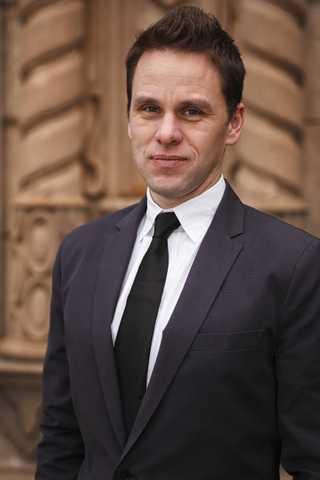"SPEAKERS OF THE DEAD: A Walt Whitman Mystery," by J. Aaron Sanders, Plume, $16, 304 pages (f)
In J. Aaron Sanders' "Speakers of the Dead: A Walt Whitman Mystery," Walt Whitman is horrified when his friend Lena Stowe is unceremoniously hung for allegedly killing her husband. He has no real chance of stopping it, even when he rushes the platform and tries to save her life and that of her unborn child.
He's pretty sure the story about Abraham Stowe's affair and a botched abortion doesn't adequately or truthfully explain why Lena Stowe should die.
Meanwhile, Whitman is living in a time when the community is desperately trying to stop grave robbing and the unholy dissection of those whom they believe would otherwise go to heaven. At the same time, the medical students at the women's college need to use the bodies for study and research.
The two goals seem to be at odds as families lose their loved ones out of their graves and doctors need the opportunities to eradicate diseases such as cholera.
Whitman is on a quest to discover why his friends are accused of heinous crimes and who is pushing the illegal (and lucrative) grave robbing. He also wants to protect his friend Henry Saunders, who has become his lover.
He uses his skill as a writer and his job at the local paper, the Aurora, to try and bring some sense and justice into the chaos. But in so doing, Whitman puts himself and those dear to him in peril and finds that the answers to all of his questions may be more connected than he initially thought.
Based on Whitman's time as an editor in New York City in 1842, the story has historical roots. Sanders tries to explain what may have happened to change the somewhat reckless writer of 1842 into the American poet he believes wrote so much better 13 years later.
Sanders includes an extensive author's note at the end of the book that addresses the historical details and people who served as inspiration for the story, acknowledging that he "played fast and loose" with facts to create the fictional mystery.
Those stories, combined with the public outrage over medical school dissections and body snatching, result in a somewhat uncomfortable tale of hysteria, hope, death, fear and love.
It's interesting and unusual reading.
The book doesn't contain any objectionable language but does contain several graphic descriptions of hangings and the dissecting of human bodies. It also contains a few instances of sexual content, none of which is detailed.
In J. Aaron Sanders' "Speakers of the Dead: A Walt Whitman Mystery," Walt Whitman is horrified when his friend Lena Stowe is unceremoniously hung for allegedly killing her husband. He has no real chance of stopping it, even when he rushes the platform and tries to save her life and that of her unborn child.
He's pretty sure the story about Abraham Stowe's affair and a botched abortion doesn't adequately or truthfully explain why Lena Stowe should die.
Meanwhile, Whitman is living in a time when the community is desperately trying to stop grave robbing and the unholy dissection of those whom they believe would otherwise go to heaven. At the same time, the medical students at the women's college need to use the bodies for study and research.
The two goals seem to be at odds as families lose their loved ones out of their graves and doctors need the opportunities to eradicate diseases such as cholera.
Whitman is on a quest to discover why his friends are accused of heinous crimes and who is pushing the illegal (and lucrative) grave robbing. He also wants to protect his friend Henry Saunders, who has become his lover.
He uses his skill as a writer and his job at the local paper, the Aurora, to try and bring some sense and justice into the chaos. But in so doing, Whitman puts himself and those dear to him in peril and finds that the answers to all of his questions may be more connected than he initially thought.
Based on Whitman's time as an editor in New York City in 1842, the story has historical roots. Sanders tries to explain what may have happened to change the somewhat reckless writer of 1842 into the American poet he believes wrote so much better 13 years later.
Sanders includes an extensive author's note at the end of the book that addresses the historical details and people who served as inspiration for the story, acknowledging that he "played fast and loose" with facts to create the fictional mystery.
Those stories, combined with the public outrage over medical school dissections and body snatching, result in a somewhat uncomfortable tale of hysteria, hope, death, fear and love.
It's interesting and unusual reading.
The book doesn't contain any objectionable language but does contain several graphic descriptions of hangings and the dissecting of human bodies. It also contains a few instances of sexual content, none of which is detailed.





